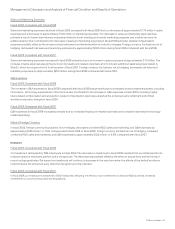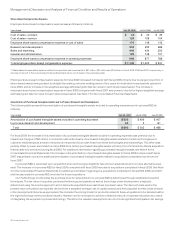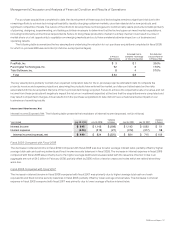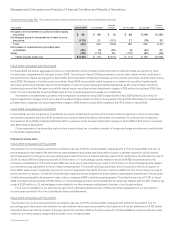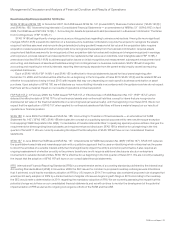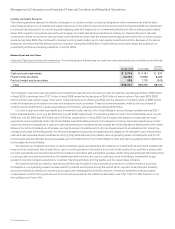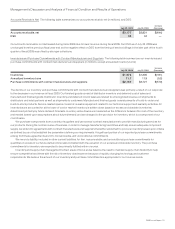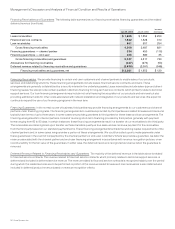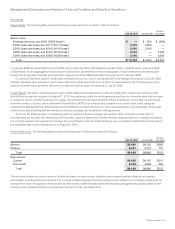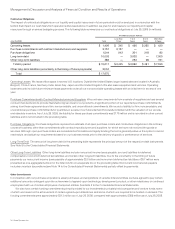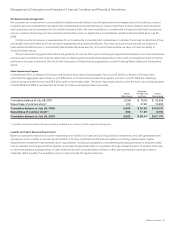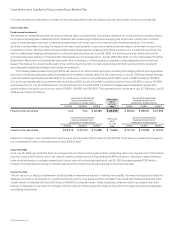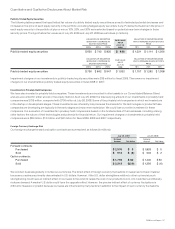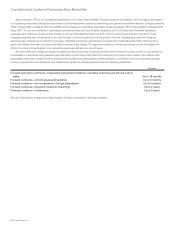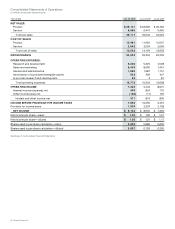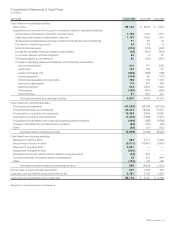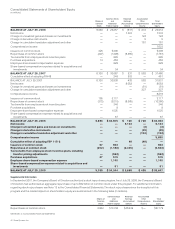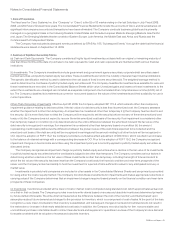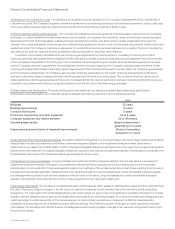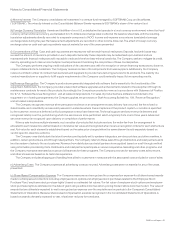Cisco 2009 Annual Report Download - page 37
Download and view the complete annual report
Please find page 37 of the 2009 Cisco annual report below. You can navigate through the pages in the report by either clicking on the pages listed below, or by using the keyword search tool below to find specific information within the annual report.
Management’s Discussion and Analysis of Financial Condition and Results of Operations
Off-Balance Sheet Arrangements
We consider our investments in unconsolidated variable interest entities to be off-balance sheet arrangements. In the ordinary course of
business, we have investments in privately held companies and provide financing to certain customers. These privately held companies
and customers may be considered to be variable interest entities. We have evaluated our investments in these privately held companies
and our customer financings and have determined that there were no significant unconsolidated variable interest entities as of July 25,
2009.
Certain events can require a reassessment of our investments in privately held companies or customer financings to determine if they
are variable interest entities and if we would be regarded as the primary beneficiary. As a result of such events, we may be required to
make additional disclosures or consolidate these entities. Because we may not control these entities, we may not have the ability to
influence these events.
We provide financing guarantees, which are generally for various third-party financing arrangements extended to our channel partners
and end-user customers. We could be called upon to make payments under these guarantees in the event of nonpayment by the channel
partners or end-user customers. See the further discussion of these financing guarantees under Financing Receivables and Guarantees
above.
Stock Repurchase Program
In September 2001, our Board of Directors authorized a stock repurchase program. As of July 25, 2009, our Board of Directors had
authorized an aggregate repurchase of up to $62 billion of common stock under this program, and as of July 25, 2009 the remaining
authorized repurchase amount was $4.8 billion with no termination date. The stock repurchase activity under the stock repurchase program
in fiscal 2008 and 2009 is summarized as follows (in millions, except per-share amounts):
Shares
Repurchased
Weighted-
Average Price
per Share
Amount
Repurchased
Cumulative balance at July 28, 2007 2,228 $ 19.40 $ 43,229
Repurchase of common stock(1) 372 27.80 10,350
Cumulative balance at July 26, 2008 2,600 $ 20.60 $ 53,579
Repurchase of common stock(1) 202 17.89 3,600
Cumulative balance at July 25, 2009 2,802 $ 20.41 $ 57,179
(1) Includes stock repurchases that were pending settlement as of the end of the respective fiscal years.
Liquidity and Capital Resource Requirements
Based on past performance and current expectations, we believe our cash and cash equivalents, investments, and cash generated from
operations, and our ability to access capital markets, including committed credit lines, will satisfy our working capital needs, capital
expenditures, investment requirements, stock repurchases, contractual obligations, commitments, principal payments on long-term debt,
future customer financings, and other liquidity requirements associated with our operations through at least the next 12 months. There are
no other transactions, arrangements, or other relationships with unconsolidated entities or other persons that are reasonably likely to
materially affect liquidity, the availability, and our requirements for capital resources.
2009 Annual Report 35


